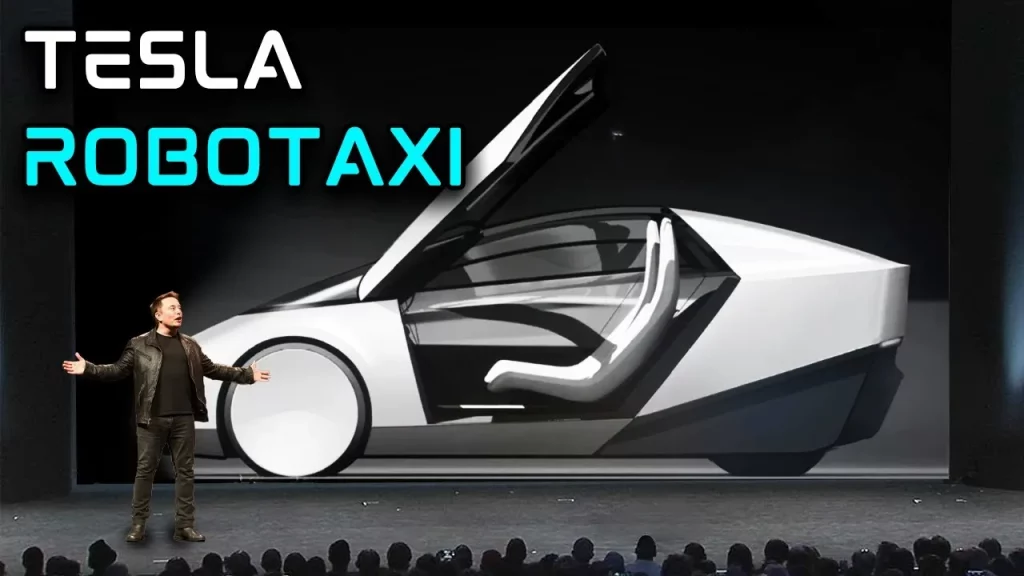Robotaxi Revolution: Uber's Stock And The Future Of Ride-Sharing

Table of Contents
The Promise of Autonomous Vehicles and Their Impact on Ride-Sharing Costs
The integration of autonomous vehicles (AVs) into ride-sharing services holds the promise of dramatically altering the cost structure of the industry. This shift could lead to significant advantages for companies like Uber, impacting their profitability and market position.
Reduced Operational Costs
Autonomous vehicles eliminate the need for human drivers, the largest single expense for ride-sharing platforms like Uber. This translates to:
- Lower labor costs: A significant reduction in wages, benefits, and associated employment-related expenses.
- Potential for increased profit margins: Higher revenue retention due to decreased operational overhead.
- Increased efficiency through optimized routes and reduced idle time: Self-driving cars can utilize GPS and sophisticated algorithms to plan the most efficient routes, minimizing wasted time and fuel consumption. This leads to more rides completed per vehicle per day, boosting overall profitability.
Increased Vehicle Utilization
Autonomous vehicles offer the potential for near-constant operation, maximizing vehicle utilization and revenue generation unlike human-driven models that require breaks, shifts, and downtime. This leads to:
- Higher fleet efficiency compared to human-driven models: 24/7 operation maximizes the return on investment for each vehicle.
- Potential for on-demand availability during peak hours: Meeting surge demand more effectively without relying on driver availability.
- Reduced downtime due to driver breaks or shifts: Continuous operation translates to a significant increase in available vehicle hours.
Challenges and Risks for Uber in the Robotaxi Transition
While the potential benefits of robotaxis are substantial, Uber and other ride-sharing companies face significant challenges in making this transition.
Technological Hurdles and Development Costs
The development and deployment of fully autonomous vehicles require immense investment. This presents several hurdles:
- High initial capital expenditure for R&D and fleet upgrades: Developing self-driving technology, upgrading existing fleets, and building supporting infrastructure are incredibly expensive undertakings.
- Potential delays and unforeseen technological challenges: Autonomous driving technology is complex; unforeseen challenges and delays are likely.
- Competition from other tech giants and startups: The robotaxi market is attracting significant investment from various companies, leading to intense competition.
Regulatory and Legal Uncertainty
The regulatory landscape surrounding autonomous vehicles is constantly evolving and varies widely across different jurisdictions. This creates uncertainty:
- Varying regulations across different jurisdictions: Companies must navigate a patchwork of regulations, creating logistical and legal complexities.
- Liability issues in case of accidents: Determining liability in the event of an accident involving an autonomous vehicle is a complex legal challenge.
- Public acceptance and safety concerns: Public perception and trust in autonomous vehicle technology are crucial for widespread adoption. Addressing safety concerns is paramount.
Impact on Uber Drivers and Employment
The widespread adoption of robotaxis will undoubtedly have a major impact on Uber's driver workforce, raising significant ethical and social concerns:
- Potential need for retraining and support for displaced workers: Uber will need to address the job displacement of its drivers and provide retraining opportunities.
- Public discourse and potential social unrest: Job displacement can lead to social unrest and require thoughtful societal planning.
- Ethical considerations regarding automation and jobs: The ethical implications of replacing human workers with machines must be carefully considered.
Investing in Uber's Stock in the Age of Robotaxi
Investing in Uber's stock in the context of the robotaxi revolution requires a long-term perspective, carefully weighing potential rewards against significant short-term risks.
Analyzing the Long-Term Potential
The successful integration of robotaxi technology offers Uber significant long-term potential:
- Increased market share and dominance: Reduced operating costs and increased efficiency can give Uber a significant competitive advantage.
- Potential for new revenue streams: Autonomous vehicles could open up new revenue opportunities beyond ride-sharing.
- Attractiveness to investors seeking long-term growth: Investors looking for long-term growth may see Uber as an attractive investment opportunity.
Mitigating the Short-Term Risks
The transition to autonomous vehicles will likely involve considerable short-term volatility:
- Volatility in stock price during the transition: Investors should anticipate significant fluctuations in Uber's stock price during this period of uncertainty.
- Need for a diversified investment strategy: Investors should diversify their portfolios to mitigate the risk associated with Uber's stock.
- Thorough due diligence before investing: Before investing, investors should conduct thorough research and assess the potential risks and rewards.
Conclusion
The robotaxi revolution presents both immense opportunities and significant challenges for Uber and the ride-sharing industry. While the transition to autonomous vehicles promises increased efficiency and reduced costs, navigating technological hurdles, regulatory complexities, and social implications will be crucial. Investors must carefully weigh the long-term potential against short-term risks when considering Uber's stock. Understanding the interplay between technological advancements, regulatory frameworks, and societal acceptance is key to assessing the true impact of the robotaxi revolution on Uber and the future of ride-sharing. Stay informed and make informed decisions about your investments in the evolving landscape of the robotaxi revolution. Understanding the potential of autonomous vehicles and their impact on ride-sharing companies like Uber is crucial for savvy investors navigating this exciting, yet unpredictable, market.

Featured Posts
-
 Lahwr 5 Ahtsab Edaltyn Khtm Wfaqy Hkwmt Ka Aelan
May 08, 2025
Lahwr 5 Ahtsab Edaltyn Khtm Wfaqy Hkwmt Ka Aelan
May 08, 2025 -
 Nc State Recruiting Setback Loss Of Kendrick Raphael
May 08, 2025
Nc State Recruiting Setback Loss Of Kendrick Raphael
May 08, 2025 -
 3 Month Warning 355 000 People Affected By Dwp Benefit Changes
May 08, 2025
3 Month Warning 355 000 People Affected By Dwp Benefit Changes
May 08, 2025 -
 Zherson I Zenit Podtverzhdeno Predlozhenie Kontrakta Na E500 000
May 08, 2025
Zherson I Zenit Podtverzhdeno Predlozhenie Kontrakta Na E500 000
May 08, 2025 -
 Prv Mech Od Ligata Na Shampioni Arsenal Vs Ps Zh
May 08, 2025
Prv Mech Od Ligata Na Shampioni Arsenal Vs Ps Zh
May 08, 2025
Latest Posts
-
 Child Rapist Living Near Massachusetts Daycare Investigation Underway
May 09, 2025
Child Rapist Living Near Massachusetts Daycare Investigation Underway
May 09, 2025 -
 Expert Opinions Clash Examining The Claims Of A Psychologist On Daycares Effects
May 09, 2025
Expert Opinions Clash Examining The Claims Of A Psychologist On Daycares Effects
May 09, 2025 -
 Massachusetts Daycare Child Rapists Arrest Rocks Community
May 09, 2025
Massachusetts Daycare Child Rapists Arrest Rocks Community
May 09, 2025 -
 Viral Podcast Ignites Fierce Debate Is Daycare Detrimental To Child Development
May 09, 2025
Viral Podcast Ignites Fierce Debate Is Daycare Detrimental To Child Development
May 09, 2025 -
 Is Daycare Harmful A Psychologists Claims And The Counterarguments
May 09, 2025
Is Daycare Harmful A Psychologists Claims And The Counterarguments
May 09, 2025
